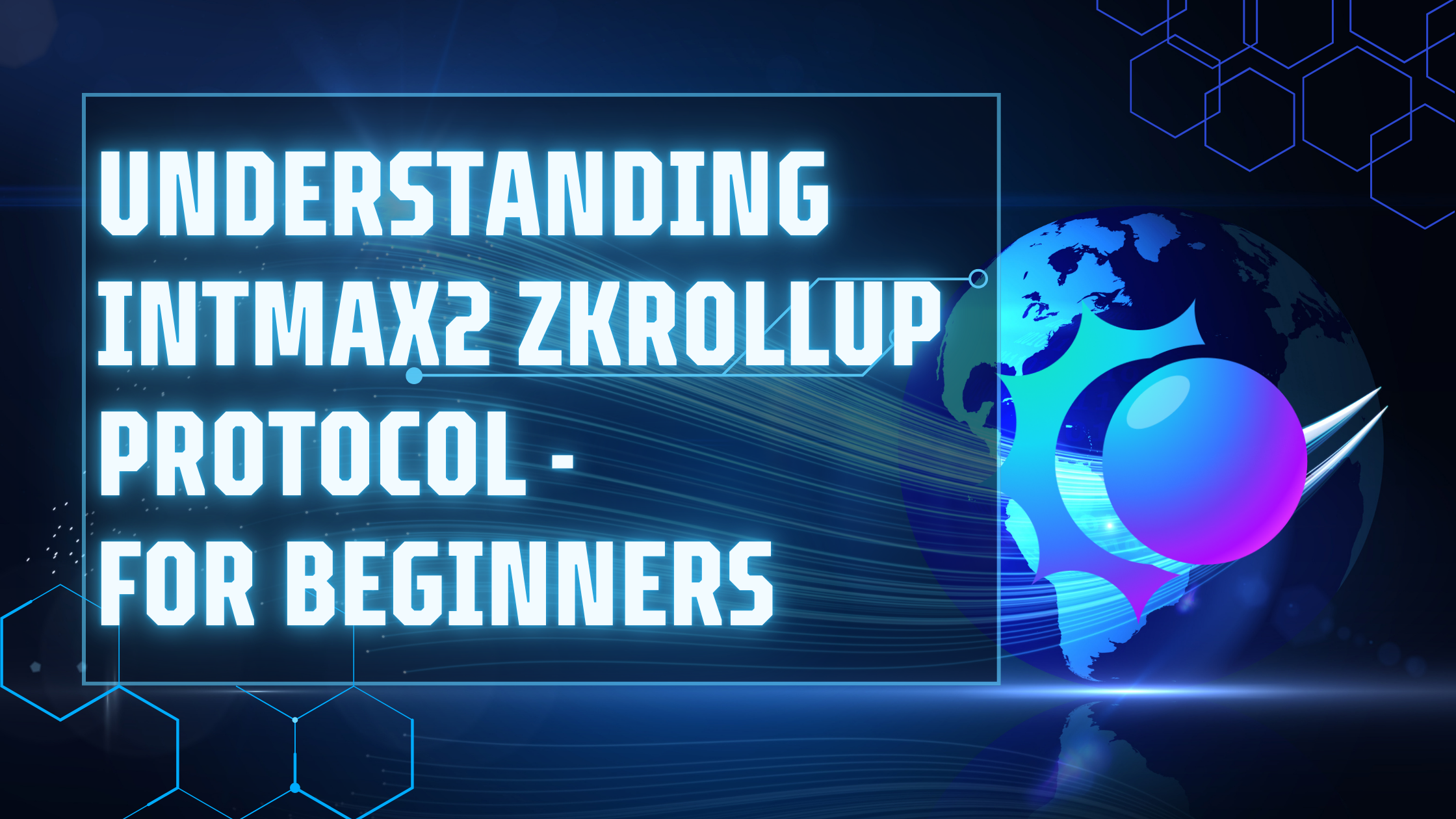Understanding Intmax2 zkRollup Protocol - For Beginners
 Glory Praise Emmanuel
Glory Praise Emmanuel
The demand for blockchain technology has increasingly outgrown the capabilities of existing infrastructure, giving rise to the need for faster, more efficient systems to be developed.
Ethereum is the first mainstream Layer 1 blockchain that brought dApps, including smart contracts, and digital assets to the massive recognition and adoption that they have worldwide. But as the scope of the network continues to grow, its limitations —which include exceedingly high gas fees and long transaction times— have become more obvious. A typical scenario is trying to make a quick online payment, only to be faced with ridiculously high transaction fees and long processing time. This is not scalable for day-to-day users in any way.
Layer 2 solutions were introduced to relieve some of the stress of the main blockchains, enabling the Layer 1 blockchains, such as Ethereum to execute quicker and more cost-friendly. One such solution is Intmax2, a groundbreaking zkRollup protocol that stands out among existing layer 2 solutions.
In this article, I will explain to some extent the details of Intmax2: how it works, its remarkable features, and how Intmax2 enhances Ethereum and makes these blockchain solutions accessible to everyday users.
What is Intmax2?
Intmax2 is a Layer 2 solution that offers scalability and privacy using a stateless architecture and Zero-Knowledge Proofs (ZK-Proofs). Unlike conventional zkRollups which require all transaction data to be posted on the underlying Layer 1 blockchain, Intmax2 transfers computational costs and data to the user's device (client-side). As a result, users can benefit from far lower transaction fees and more privacy while yet enjoying the same level of security as Ethereum.
Key Features of Intmax2
Client-Side Validation
Moving the validation of transactions to the client side on Intmax2 means that even Block Builders and Rollup Contracts can't know what you are doing in a transaction. You retain control over your data which is kind of comfortable to some extent as well. This strengthens the privacy provided by using Zero-Knowledge Proofs (ZK-Proofs) to prevent your personal and commercial information from being exposed as unencrypted data anyone can see on a blockchain. That's pretty much high privacy without compromising on your security in a way.
Near-Zero Transaction Fees
One of the cool benefits of Intmax2 is its near-zero transaction costs as compared to other projects. Since Intmax2 minimizes all on-chain data to just 5 bytes, the base layer of Intmax slashes transaction costs to as low as half a cent. This has equipped every user globally with the option to access global payments affordably.
Decentralization and Censorship Resistance
Intmax2 has been designed to be completely decentralized since day one, sacrificing nothing for performance. It allows anyone to participate as a validator without having to ask for permission from anyone. This benefit guarantees a more robust, censorship-resistant, and expansive network, reducing another massive obstacle in Web3.
Stateless Block Production
The stateless design of Intmax2's architecture plays a part in its efficiency and scalability by supporting up to 7,500 very fast transaction batches per second on Ethereum. With block producers not having to store any transaction data, there is a reduction in computational overhead and the creation of a more scalable solution. This capacity greatly outperforms traditional rollups and establishes Intmax2 as a frontrunner for effective blockchain scalability and lower costs.
How Intmax2 Works
Intmax2 handles transactions using the principle of signature aggregation. When you send a transaction, it needs to be verifiable by everyone to ensure it's correct. Intmax2 uses the BLS signature scheme, which allows for signature aggregation. Since an aggregated signature verifies that all pre-aggregation signatures are correct, only a single aggregated signature needs to be posted on-chain. This one signature is what gets posted to the blockchain, making the process much faster and taking up less space.
This method ensures that all necessary verification data is available and verifiable by anyone. When you first send a transaction, you need to include your public key (your address), and your public key is assigned an account ID. The next time you send a transaction, you only need to include your account ID which is assigned to your public key. This account ID is just 5 bytes of data. This is why 5 bytes of data availability are required for each transaction.
This way, very little data needs to be posted on-chain Ensuring cheaper gas fees, privacy, and a more scalable network.
Intmax2's stateless architecture is at the heart of its efficiency and scalability.
Conclusion
INTMAX aims to tackle the numerous and long-standing issues users have with other Layer 2 systems, such as high fees, difficulty maintaining anonymity, centralization, etc. The stateless architecture, along with its algorithm, creates an extremely efficient and cost-effective platform for both users and developers alike. Intmax2 is creating a more inclusive and accessible Ethereum environment by addressing and removing some of Ethereum's traditional scalability and cost limitations.
Subscribe to my newsletter
Read articles from Glory Praise Emmanuel directly inside your inbox. Subscribe to the newsletter, and don't miss out.
Written by

Glory Praise Emmanuel
Glory Praise Emmanuel
Glory Praise Emmanuel is a Frontend Engineer, Technical writer and Blockchain Developer based in Nigeria. She is passionate about providing solutions with technology and making the world a better place. She is interested in Open Source and community building.